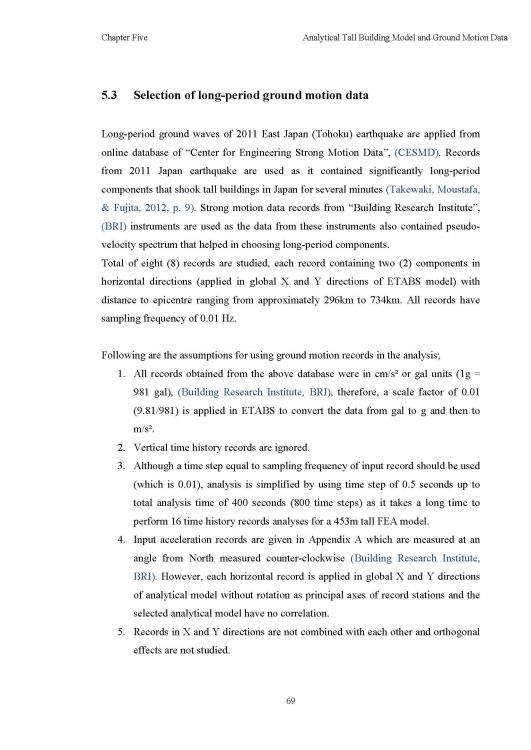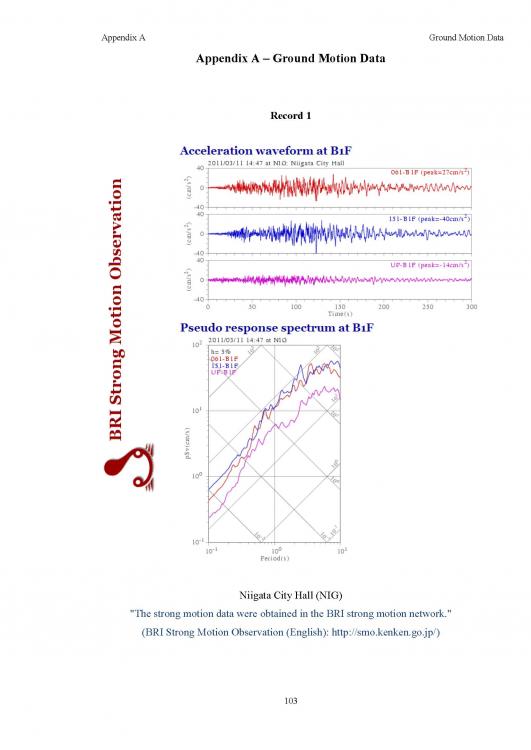
WR1
Administrator-
Posts
985 -
Joined
-
Last visited
-
Days Won
286
Content Type
Profiles
Forums
Events
Everything posted by WR1
-
oh okay, i thought are something else. Actually most of the columns or beams in practice are eccentric. Its just the extra moment due to e. Rest of the design process is same. Even if they are concentric, you design for minimum eccentricity. In precast, all the supporting columns/walls/beams are eccentric due to ledges, haunches, corbels and nibs.
-
What are the eccentric beams btw? I am not familiar with the term.
-
Hover the mouse over the beams, thats beam deflection.
-
If its only a post analysis issue and analysis results are already okay, you can use excel sheets, other design tools or even hand calculations to calculate required reinforcement. Column design is pretty straightforward. Good luck.
-
I haven't used it. Looks like a bug.
-
Pardon, which software you are using? I thought its in ETABS.
-
If the total base shear is 900kN, how the columns are resisting 1000kN? Can't understand without look at your model.
-
Same procedure.
-
This is absolutely wrong practice. 1. PIERS Assign as per option a (See image posted by sir Makhzumi in previous reply) Why didn't you apply pier to spandrels. Most people do not apply piers labels to spandrels. Give up on that. Lets talk about this image. The top floor. Piers go horizontal with same number. 2 shells of P3, 2 shells of P2 and 2 shells of S1 should all have been defined as one pier. Then P2 and P3 slender piers below them should be assigned different pier names separately. Infact, as flexural deformations are dominant in these slender piers, divide them (mesh) into 4 pieces and assigned different pier to top 2 shells and different to bottom 2 shells (depends on the moment diagram though). 2. SPANDRELS Assign as per option a (See image posted by sir Makhzumi in previous reply) The spandrel I see in image is a deep beam. Isn't it? L/D < 4? If so, where is the meshing? If its not a deep beam then apply different spandrel labels to each shell atleast in the middle for postive moment design.
-
They might be using "mass" option that is by default.
-
Good and the life of post 2017 graduates will be more relaxed. It would help them for immigration purposes and meeting the minimum requirements for professional exams as in PE.
- 3 replies
-
- pec
- washington accord
-
(and 1 more)
Tagged with:
-
I would consider it to be cantilever system with R = 2.0 (don't remember) or 2.9 as Uzair said. Also, I'd make sure the columns are properly connection through beams/slabs with core or some sort of bracing (they should not behave cantilevers). Then I'd also design the columns for atleast 25% lateral shear just to be on the safe side depending on the project importance (its an important project).
-
structural engineering modelling slanted shear wall in ETABS
WR1 replied to Jaher Wasim's topic in Concrete Design
Slanted walls are possible, but then you have to design them yourself by taking the stress/moment values from contours. Or you can use SAP. Drawing such an intricate geometry requires some sort of creativity in ETABS from the user. You have to play with lot of dummy joints and lines and reference planes. Good luck.- 6 replies
-
- modelling
- building design
- (and 6 more)
-
Collectors requirement and Omega factor in foundation design
WR1 replied to Waqas Haider's topic in Seismic Design
1. collector elements not required in 2-way beam (beam should be sufficiently rigid). 2. to complete the load path (as BAZ mentioned), omega factor needs to be considered all the way down to foundation. For if a discontinuous element at last floor is designed for omega factor, i would design all the columns/walls below and even the foundation on increased forces to make sure the load path works.- 3 replies
-
- collectors
- omega
-
(and 5 more)
Tagged with:
-
I had a wonderful experience doing forex which I later quit. I am not into stocks but I think the same rules will apply here; 1. The most important thing is to 'be patient'. And by this I mean really be patient. Its a game of nerves. 95% people in forex lose because they are impatient. 2. Always be up to date with latest trends and news, i mean on daily basis. Don't just buy and then sleep. Get familiar with different types of predictors, study the mathematics behind different charts such as Fibonacci retracement. 3. Mix the risk levels. Don't just play only on high risk deals. Now coming back to your question. The minimum investment depends on your goals. Short term or long-term? Risk level: low-risk or high-risk? You wanna make quick profits on the go or really want to be a sustained player? I dont think there is leverage system in stocks as in forex. So i guess anything less than 200k pkr wouldnt yield much. Again it depends on your budget and the strategy. But one caution: Think big, start small. I remember in forex there were virtual accounts to practice for atleast 6 months before investing a considerable amount. See if this is the case in stocks too? Depends on the broker. Even if not, study the market daily thinking like you are actually investing. The thing with forex and stock trading is: if you cannot manage 1$, you cannot manage 1million$. So practice lets say by assuming you have invested 10,000 pkr and then stick to the strategy and see where the market swings. Once you have tested your strategy which ofcourse you have altered time to time based on your learning, start doing investment with real money. One thing good is you are thinking at this stage to make some passive income. Thats brilliant idea. May be you should read "Rich dad, poor dad" book, it will help. Another book i'd recommend is "4 hours work week". They wont teach you about stocks, but will definitely teach you about the ideas of passive income and work-life culture. And lastly, you should constantly input more money every month or year, just compare in excel the compound interest (or profit) graphs. Don't just assume you will put some money and will gain on profits and re-investment. Good but also explore the power if you constantly flowing more money into your investments. Good luck!
-
I think as long as the shear capacity is okay (depends on b and d), there shouldn't be a problem.
-
Very nice. Well...following are excepts from my thesis; You can use following databases that my instructor recommended; "6- I suggest that you model using time history analysis. There is different data banks where you can look for low frequency ground motions/earthquakes. Take a look into the following websites: a. http://earthquake.usgs.gov/monitoring/nsmp/data.php b. http://strongmotioncenter.org/cgi-bin/CESMD/search1.pl in the second website you will find a lot of datasets recorded from different earthquakes. I suggest you spend some time until you understand the structure of these websites and the data available there so that you can choose a number of earthquakes that you could use in your studies."
-
This topic as ambiguous to me as it is to you. Below is my understanding for the discussion purpose as I am not an authority on this. The usual practice here in Middle East is to apply seismic forces from the "base" or from the bottom most story of the model which is not a correct approach in most cases. This topic has been discussed at length elsewhere in the forum. There is one article from StrucMag about this issue as well. Seismic forces should be applied from ground level because horizontal seismic motion is imparted closer to ground surface. Additionally it will reduce T because of reduced height and will generate more seismic force. However, if there is liquifiable soil, the base should be at the bototm of basement level and not the ground level.
-
Dear Saiful Islam, Immediate deflection vs long-term deflection is one issue. Linear analysis vs non-linear analysis is another. In ETABS, generally we are almost always performing linear analysis. That means deflection is directly related to the load applied without long-term non-linear effects. So let's ignore non-linear analysis for a moment. In linear analysis, now the question is how do we get immediate and long-term deflection. Immediate deflection could be non-cracked deflection or cracked deflection. Practically speaking, long-term deflection will always be on cracked sections. Although anything "cracked" is essential a non-linear problem, but here let's stick to out point of doing linear analysis only. Now, generally we are not interested in immediate non-cracked deflection. This leaves us with cracked - short-term & long-term deflections in LINEAR analysis. As you are doing LINEAR analysis in ETABS, you cannot get cracked deflections directly. For this, you may apply stiffness reduction modifier option available in ETABS. As you are not applying any stiffness reduction modifier, that means, its NON-CRACKED. This is the answer to your question. However, exploring further, if you want to obtain long-term deflection, you can multiply the immediate deflection by a long-term factor given in ACI chapter 9. ----------------------------- Now comes the non-linear analysis: You can use SAFE for non-linear analysis and get long-term cracked deflections (non-linear) without using modifiers. The cracked non-linear analysis in SAFE will give you long-term cracked deflection which will depend on the extent of cracking which will depend on the reinforcement which will depend on the moment applied. This moment again will depend on the stiffness of cracked section including the reinforcement. So you see, its a non-linear iteration problem. To read further about, linear vs non-linear and elastic vs inelastic analysis, please refer to the book 'Modelling for structural analysis' by Powell.
-
The book; Modern Structural Analysis in section 5.11 describes vierendeel frames in 2-3 pages.
-
Good question. Seismic forces are actually inertial forces generated within a body in response to seismic acceleration at ground. When seismic ground waves (PGA) accelerate a building (Sa; spectral acceleration), the inertia of a building resist these accelerations generating inertial forces in the building. Inertial forces are nothing strange but the usual F=ma i.e. the product of mass and acceleration. In softwares, the joints or nodes are loaded with this F based on the mass attributed to the tributary area of that particular node x accelration of that floor. Like this, these forces are applied at each level like static procedures.
-
Farooq bro, I meant the sketch for the the loads and bending moment diagram from ETABS. I am afraid we cant open and check your ETABS model.
-
But keep in mind, this would change the building system and R factor.
-
Are you running cracking analysis? If yes, thats the reason. If no, then are you using the same modifiers as in ETABS?




